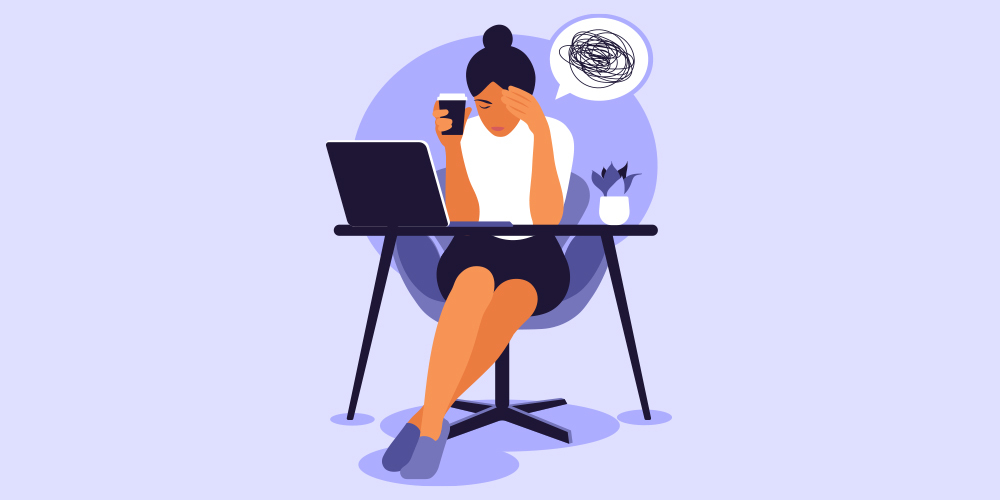Last Updated on August 19, 2025
Every year on October 10th, the global community observes World Mental Health Day, a day dedicated to raising awareness on mental health issues and fostering efforts that promote mental well-being. First celebrated in 1992 as an initiative of the World Federation for Mental Health (WFMH), this day has since grown in significance, with more organizations and countries joining hands to break the stigma surrounding mental health.
This year’s theme, “Mental Health at Work,” highlights the crucial connection between the workplace and mental health, underlining the importance of fostering supportive, healthy work environments. The collaboration between the World Health Organization (WHO) and its partners has brought mental health at work into sharper focus, demonstrating that a positive, safe workplace can safeguard mental well-being.
This article will delve into the critical connection between mental health and the workplace, explore the impact of work environments on mental well-being, the common challenges employees face, and practical strategies for fostering a mentally healthy workplace.
World Mental Health Day 2024: Why Does it Matter?
The mission behind World Mental Health Day is to make mental health a global priority, encouraging people everywhere to engage in open conversations about mental well-being. Each year, the observance focuses on a particular aspect of mental health to inspire action—whether it’s increasing awareness of mental health disorders, promoting access to care, or advocating for the rights of those living with mental health conditions.
In 2024, the emphasis on the workplace is particularly relevant as millions of people around the world spend a significant portion of their lives at work. The benefits of a mentally healthy work environment go beyond productivity. They create opportunities for social inclusion, provide structure, build confidence, and promote a sense of purpose.
1 in 5
Adults live with a serious mental illness.
77%
Workers struggle with workplace related stress and symptoms.
60%
US workers believe that inadequate mental health resources are provided by their organization.
Connection Between Mental Health & Workspace: World Mental Health Day 2024

Almost 60% of the world’s population is employed, and every worker has the right to a safe and healthy environment. Decent work not only protects mental health but also contributes positively to it by offering:
- A source of livelihood and financial stability
- A sense of accomplishment and confidence
- Opportunities for building positive relationships
- A structured routine that can help improve mental well-being
Several factors can lead to mental health challenges in the workplace, including:
- Long working hours: Extended hours without sufficient rest can lead to burnout and fatigue, affecting mental well-being.
- Stressful work environments: High-pressure roles or lack of proper resources and support can cause chronic stress, which impacts mental health.
- Lack of social support: Feeling isolated or unsupported by colleagues and supervisors can increase anxiety and depression.
- Bullying and harassment: Negative behaviors such as bullying, or harassment contribute significantly to workplace anxiety, stress, and poor mental health outcomes.
- Workplace discrimination: Discrimination based on race, gender, or other factors can create the workplace as a breeding ground for mental health challenges.
- Depression: A common mental health disorder, depression manifests as persistent sadness, hopelessness, and a lack of interest in work and life in general, making it difficult to meet work-related expectations and responsibilities.
- Shift Work Disorder: Individuals working night or rotating shifts may experience sleep disturbances, leading to issues like depression, anxiety, and irritability.
Individuals with pre-existing mental health conditions are particularly vulnerable to these risks, and their conditions may worsen in an unhealthy environment. Psychosocial risks, such as long hours, unclear job roles, or a lack of control over work tasks, can harm an individual’s mental well-being, leading to burnout, anxiety, depression, and other stress-related conditions.
World Mental Health Day 2024: Addressing Mental Health Challenges at Work
Creating mentally healthy workspaces requires concerted efforts from employers, governments, and organizations representing workers. Three key actions can improve mental health at work:
- Prevent work-related mental health conditions: This can be achieved by identifying and reducing psychosocial risks in the workplace. For example, implementing policies that address violence, harassment, and overwork can protect employee’s mental health.
- Promote mental health awareness and literacy: Training programs for managers and employees can enhance their understanding of mental health conditions. Managers should be equipped to recognize and address signs of mental distress among their teams, while all employees can benefit from learning how to manage stress and maintain mental well-being.
- Support workers with mental health conditions: Employers can ensure that workers with mental health conditions can have the opportunity to thrive through reasonable accommodations, such as flexible work hours, and return-to-work programs that blends with care with professional support.
World Mental Health Day 2024: Practical Tips to Reduce Stress at Work
For individuals looking to manage stress and maintain good mental health, here are some simple, yet effective tips:
- Practice mindfulness: Engaging in mindfulness meditation helps you focus on the present moment, reducing anxiety and emotional overwhelm.
- Exercise regularly: Physical activity naturally reduces stress by releasing endorphins, improving mood, and promoting mental clarity.
- Prioritize sleep: Good sleep hygiene is essential for reducing stress. A consistent sleep schedule with 7-9 hours of rest can boost your emotional resilience.
- Limit caffeine and sugar intake: Excessive amounts of caffeine and sugar can elevate stress levels. Cutting back on these can stabilize your mood.
- Deep breathing exercises: Techniques like diaphragmatic or box breathing can calm your nervous system and lower stress levels in the moment.
- Organize your tasks: Managing time efficiently by breaking down tasks and setting realistic goals helps prevent overwhelm and reduces stress.
Also read: Falling Asleep at Work: Understanding Shift Work Disorder & How to Combat Drowsiness
The Role of Clinical Trials in Advancing Mental Health Care
As the understanding of mental health continues to evolve, clinical trials play a crucial role in developing new potential treatments for conditions such as major depressive disorder, anxiety, bipolar disorder, and borderline personality disorder. Participating in a mental health clinical trial not only helps researchers evaluate the safety and efficacy of new therapies but also offers patients access to treatments that may not be widely available in the market.
Takeaway
The workplace can either be a source of fulfillment and security or a cause of stress and mental health challenges. To make work environments healthier and more supportive, we need collaborative action across sectors and the meaningful inclusion of people with lived experiences of mental health conditions. Only by protecting and promoting mental health at work can we create conditions where every worker thrives, ensuring that mental well-being becomes a global priority.




